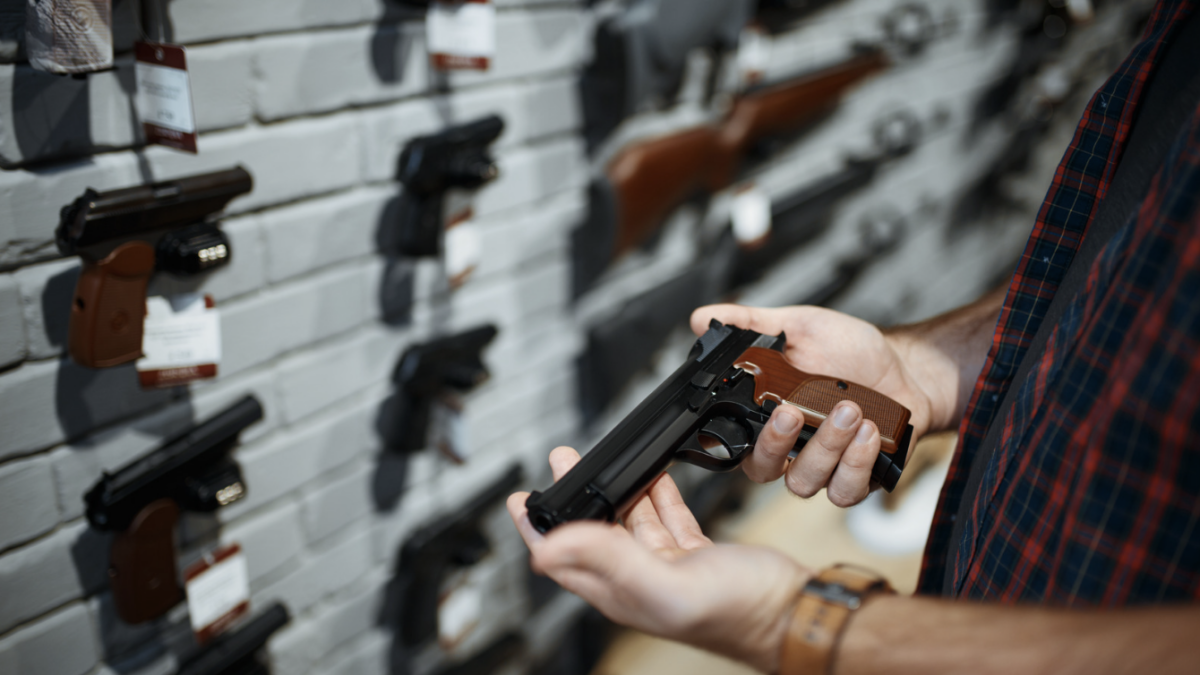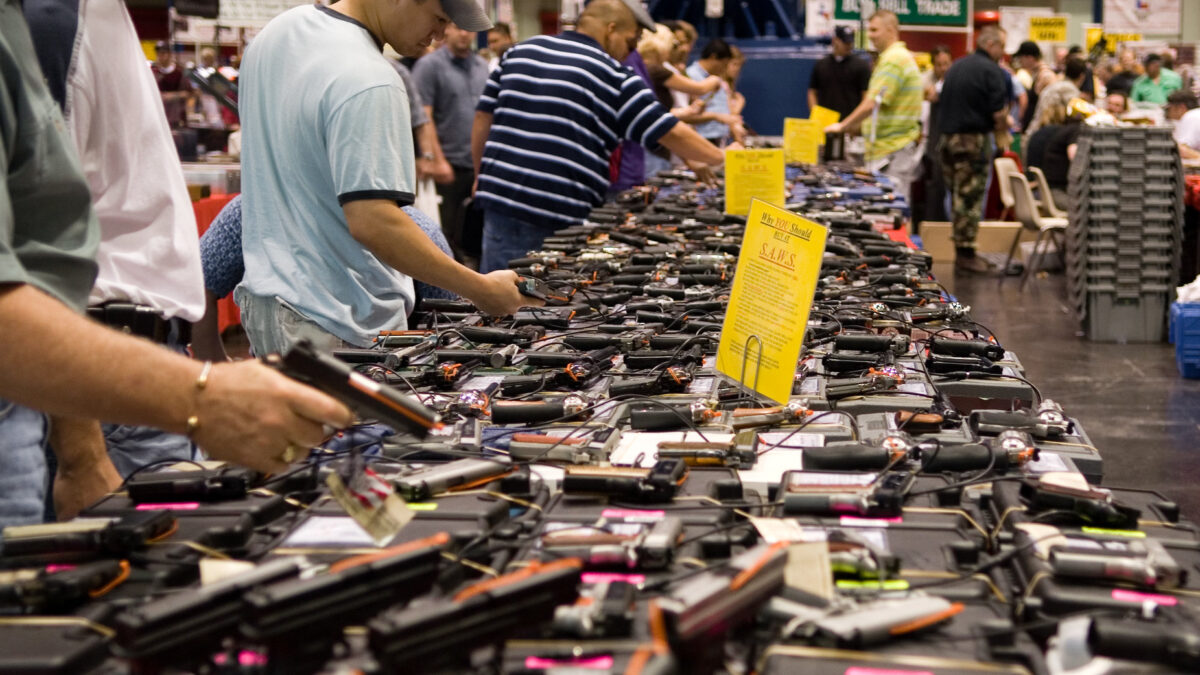
Over the past 50 years, a wide-ranging, well-funded political, cultural, and legal revisionism effort has been undertaken to erase much of the United States’ history and culture of the gun and the Second Amendment. The New York Times’s Nick Kristof’s recent column, “It’s Time To Talk About The NRA” (because no one’s been talking about them!) is a good example of this trend.
I’ll ignore Kristof’s partisan contentions about firearm violence, gun control, and the National Rifle Association’s lobbying, fundraising and scoring—much of it highly debatable—to point out three of the misleading historical assertions he embraces.
First, Kristof makes the claim that contemporary firearm advocates, in an effort to “reinterpret” the Second Amendment, had “expanded the gun-buying constituency by reframing the purpose of firearms from hunting to personal security.” As even a cursory reading of the Founders and American leaders through the 19th century can attest, this is untrue.
The predominant philosophical concern driving the creation of the Second Amendment was protection from domestic or foreign tyranny, or protection of personal property and life. As John Adams explained (quoting legal authority William Blackstone) when defending a British soldier who had fired into an American mob in 1770, self-defense was “the primary canon in the law of nature.”
In my book “First Freedom: A Ride Through America’s Enduring History with the Gun,” I detail how this ideal was widely embraced by the Founding generation. The right to defend your property, life and liberty girds the entire American project. Not a single Founder ever challenged the notion of individual firearm ownership. Most celebrated it. Individual ownership of firearms was so omnipresent in colonial days—and beyond—that Americans saw no more need to debate its existence. Debates over the Second Amendment involved a disagreement over who should control the militia: state or federal government.
 Second, the idea that “Gun control laws were ubiquitous” in the 19th century is the work of politically motivated historians who cobble together every minor local restriction they can find in an attempt to create the impression that gun control was the norm. If this were true, Kristof wouldn’t need to jump to 1879 to offer his first specific case.
Second, the idea that “Gun control laws were ubiquitous” in the 19th century is the work of politically motivated historians who cobble together every minor local restriction they can find in an attempt to create the impression that gun control was the norm. If this were true, Kristof wouldn’t need to jump to 1879 to offer his first specific case.
Visitors to Wichita, Kan., had to check their revolvers at police headquarters. As for Dodge City, a symbol of the Wild West, a photo shows a sign on main street in 1879 warning: “The Carrying of Fire Arms Strictly Prohibited.”
This talking point has been trotted out for years because it’s the closest thing anyone can find to resemble gun control in the Old West — a picture. But we don’t even know how rigidly the law was enforced, for how long, or if ever. We certainly don’t know that the guns were dropped off at “police headquarters.”
Dodge City-type ordinances—and those of some other towns—typically applied to the areas north of the “deadline,” which was the railroad tracks and a kind of red-light district. By 1879, Dodge City had nearly 20 businesses licensed to sell liquor and many whorehouses teeming with intoxicated young men. It was reasonable that these businesses wouldn’t want armed men with revolvers packed into their establishments.
However, the men voluntarily abandoned their weapons in exchange for entertainment and drink—just as they do today when entering establishments that prohibit the carrying of firearms. Those weapons were handed back to them when they were done. Not in their wildest imaginations would they have entertained the notion of asking the government for permission—getting a license or undergoing a background check—to own a firearm.
In the rest of the city, as with almost every city in the West, guns were allowed, and people walked around with them freely and openly. They bought them freely and openly. Even children could buy them. A man could buy a Colt or Remington or Winchester, and he could buy as many as he liked without anyone taking notice.
The fact is that in the 19th century there were no statewide or territory-wide gun control laws for citizens, and certainly no federal laws. Nor was there a single case challenging the idea of the individual right of gun ownership. Guns were romanticized in the literature and art, and the era’s greatest engineers designed and sold them. All the while, American leaders continued to praise the Second Amendment as a bulwark against tyranny.
Those who praised this right, incidentally, include numerous post-Civil War civil rights activists, who offered particularly powerful arguments for the importance of the Second Amendment. Most gun-control regulations that did exist, after all, were used for subjugating blacks and Indians.
From the Old West, we jump to the 20th century, about which Kristof says:
In the 1920s and 1930s, the N.R.A. favored tighter gun laws, and its president, Karl Frederick, said that the carrying of weapons ‘should be sharply restricted and only under license.’ In 1934, the United States helped pioneer modern gun laws with the National Firearms Act, with the blessings of the N.R.A., and came close to banning handguns. As recently as the 1960s, the N.R.A. supported — more grudgingly — some limits on guns.
The United States never came close, or even entertained, the idea of banning “all handguns.” I have no idea what Kristof is referring to, since he offers no citation for this claim. The National Firearms Act of 1934, of course, didn’t ban any specific category of gun. The National Firearms Act of 1938 didn’t ban any specific gun, either. In fact, the NRA—still a hobbyist group at the time—only supported the legislation, which allowed for regulating shotguns’ barrel length and instituted a tax on some fully automatic weapons, when Congress dropped a proposal to create a registry of fingerprints.
The first time any kind of gun ban was instituted regarding a category of weapon occurred in 1986, when the sale of fully automatic weapons was highly restricted.
The story of the NRA’s dramatic radicalization by a minority is another favorite yarn of anti-Second Amendment advocates—a misleading half-truth that is also largely irrelevant. It’s true that the NRA was not predominately political, since there was no need for such an organization in a nation where no one had seriously attempted to inhibit the ability of law-abiding citizens to own guns.
By the time the Gun Control Act of 1968 was proposed—a law that established a system for federally licensed gun dealers and set some restrictions on certain classes of firearms—the NRA was more involved. It successfully opposed the most invasive elements of that legislation: namely, a mandated federal registry for guns and licensing for all gun carriers. That’s the kind of legislation gun control advocates want today.
It was after this time that a slew of regulations were enacted that made it increasingly difficult for law-abiding people in crime-ridden urban areas to own a gun. The NRA went through an internal debate about its future. When in 1971 the Bureau of Alcohol, Tobacco, and Firearms shot and paralyzed longtime NRA member Kenyon Ballew in a Washington suburb—it claimed Ballew was suspected of possessing illegal weapons (none were found)—many co-members saw it as a portent that government agencies would abuse gun control laws to target peaceful Americans.
So the organization had to make a choice. It could remain a predominately hunting, marksmanship, and safety group, or it could embrace the growing activist wing and push back against emerging regulations. By the mid-1970s it seemed as if the organization had made that choice when it ejected around 70 of the most vociferous gun rights advocates. In 1976 the NRA board decided to move the organization headquarters from Washington to Colorado.
At the 1977 NRA convention in Cincinnati, there was something of a coup as the politically minded advocates wrested the organization away from the apolitical wing. Many of today’s gun control advocates like to point to the “Cincinnati revolt” as the moment when a small group of radicals took over the movement, undermining true gun owners, who weren’t interested in politics. But the shift was merely a reflection of a growing inclination among gun owners at the time to protect themselves.
The NRA was best-positioned organization to take the lead on gun issues. If the NRA didn’t do it, there would have been another advocacy group—and many emerged during these years—that would have taken its place. The fact that the NRA hadn’t initially involved itself in politics didn’t mean most gun owners disagreed with its new positioning or that it had reinvented or tried to re-engineer the Second Amendment. Hardly. From the time of the 1977 “revolt” to 1983, in fact, the NRA more than doubled its membership. And membership rose even further in the subsequent years.
You can oppose the Second Amendment if you like. You can demonize the NRA if you want. But you can’t rewrite history to comport with your political positions.









